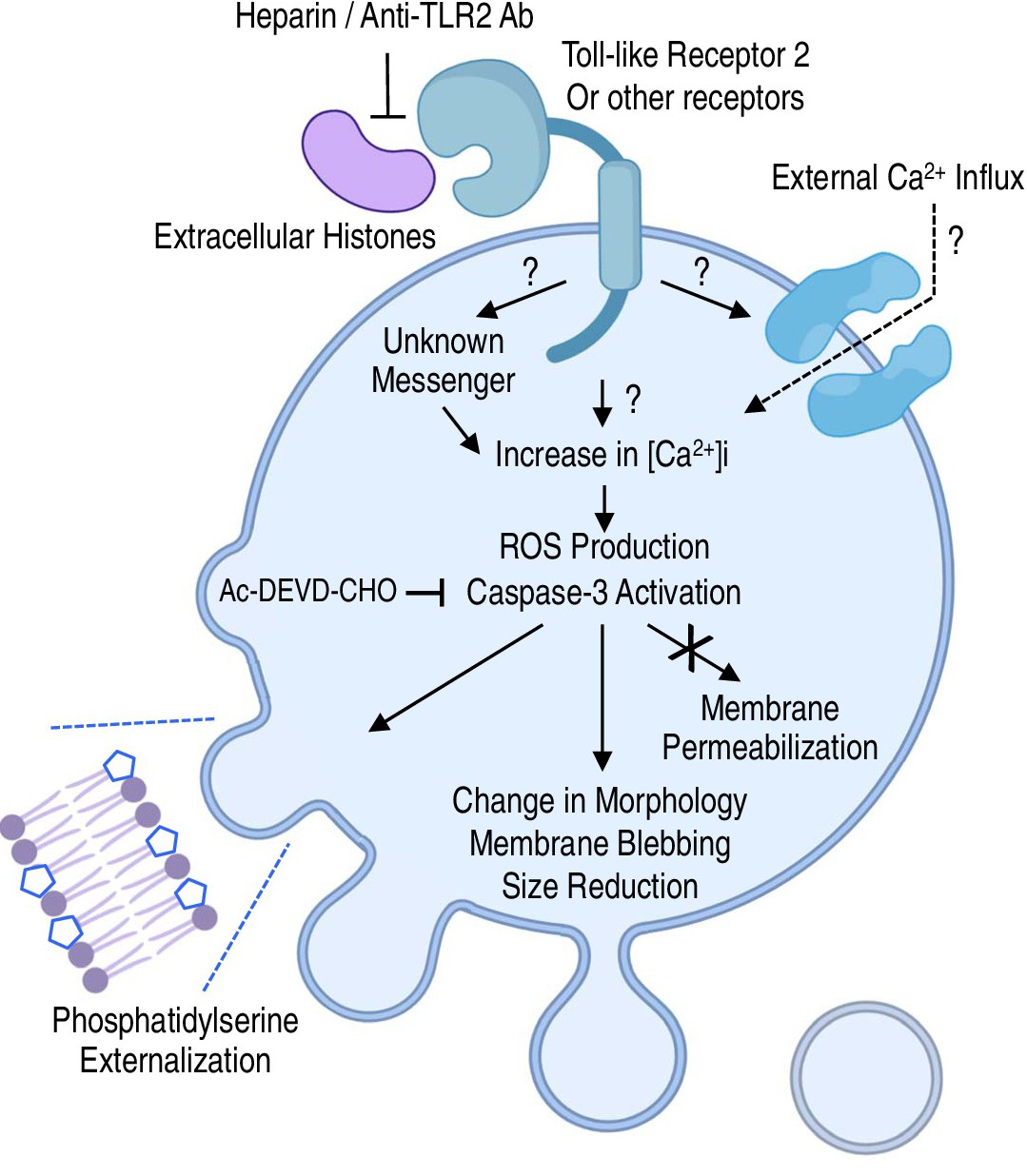Fig. 5. Schematic diagram showing how EHs elicit eryptosis in human erythrocytes. As the damage-associated-molecular-pattern (DAMP) molecules, extracellular histones (EHs) activate Toll-like receptor 2 (TLR2) or other receptors on the surface of human RBCs via a Ca2+-dependent and/or -independent pathway that elicit(s) the rise of reactive oxygen species (ROS) and activation of caspase-3 directly or indirectly. Eryptotic hallmarks such as cell shrinkage, externalization of phosphatidylserine and membrane blebbing are observed within a 3-hour incubation time. Yet, no membrane permeabilization in terms of hemolysis or calcein release from RBCs or RBC ghosts was observed 24 hours after EHs treatment. Heparin and anti-TLR2 Ab are able to block, at least in part, the EHs-mediated apoptosis in human erythrocytes.
